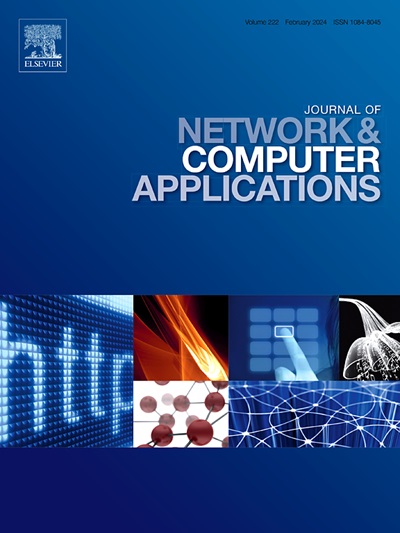Energy-efficient optimal relay design for wireless sensor network in underground mines
IF 8
2区 计算机科学
Q1 COMPUTER SCIENCE, HARDWARE & ARCHITECTURE
引用次数: 0
Abstract
The transceiver design for multi-hop multiple-input multiple-output (MIMO) relay is very challenging, and for a large scale network, it is not economical to send the signal through all possible links. Instead, we can find the best path from source-to-destination that gives the highest end-to-end signal-to-noise ratio (SNR). In this paper, we provide a linear minimum mean squared error (MMSE) based multi-hop multi-terminal MIMO non-regenerative half-duplex amplify-and-forward (AF) parallel relay design for a wireless sensor network (WSN) in an underground mines. The transceiver design of such a network becomes very complex. We can simplify a complex multi-terminal parallel relay system into a series of links using selection relaying, where transmission from the source to the relay, relay to relay, and finally relay to the destination will take place using the best relay that provides the best link performance among others. The best relay selection using the traditional technique in our case is not easy, and we need a strategy to find the best path from a large number of hidden paths. We first find the set of simplified series multi-hop MIMO best relays from source to destination using the optimum path selection technique found in the literature. Then we develop a joint optimum design of the source precoder, the relay amplifier, and the receiver matrices using the full channel diagonalizing technique followed by the Lagrange strong duality principle with known channel state information (CSI). Finally, simulation results show an excellent agreement with numerical analysis demonstrating the effectiveness of the proposed framework.
矿井无线传感器网络节能优化中继设计
多跳多输入多输出(MIMO)中继的收发器设计非常具有挑战性,对于大型网络来说,通过所有可能的链路发送信号是不经济的。相反,我们可以找到从源到目的地的最佳路径,从而获得最高的端到端信噪比(SNR)。本文提出了一种基于线性最小均方误差(MMSE)的多跳多终端MIMO非再生半双工放大转发(AF)并联中继设计方法,用于矿井无线传感器网络。这种网络的收发器设计变得非常复杂。我们可以使用选择中继将复杂的多终端并行中继系统简化为一系列链路,其中从源到中继,中继到中继,最后中继到目的地的传输将使用提供最佳链路性能的最佳中继进行。在这种情况下,使用传统方法进行最佳中继选择并不容易,我们需要一种从大量隐藏路径中找到最佳路径的策略。我们首先利用文献中发现的最优路径选择技术找到从源到目的的简化串联多跳MIMO最佳中继集。然后利用已知信道状态信息(CSI)的拉格朗日强对偶原理,利用全信道对角化技术对信源预编码器、中继放大器和接收机矩阵进行联合优化设计。最后,仿真结果与数值分析结果非常吻合,验证了所提框架的有效性。
本文章由计算机程序翻译,如有差异,请以英文原文为准。
求助全文
约1分钟内获得全文
求助全文
来源期刊

Journal of Network and Computer Applications
工程技术-计算机:跨学科应用
CiteScore
21.50
自引率
3.40%
发文量
142
审稿时长
37 days
期刊介绍:
The Journal of Network and Computer Applications welcomes research contributions, surveys, and notes in all areas relating to computer networks and applications thereof. Sample topics include new design techniques, interesting or novel applications, components or standards; computer networks with tools such as WWW; emerging standards for internet protocols; Wireless networks; Mobile Computing; emerging computing models such as cloud computing, grid computing; applications of networked systems for remote collaboration and telemedicine, etc. The journal is abstracted and indexed in Scopus, Engineering Index, Web of Science, Science Citation Index Expanded and INSPEC.
 求助内容:
求助内容: 应助结果提醒方式:
应助结果提醒方式:


